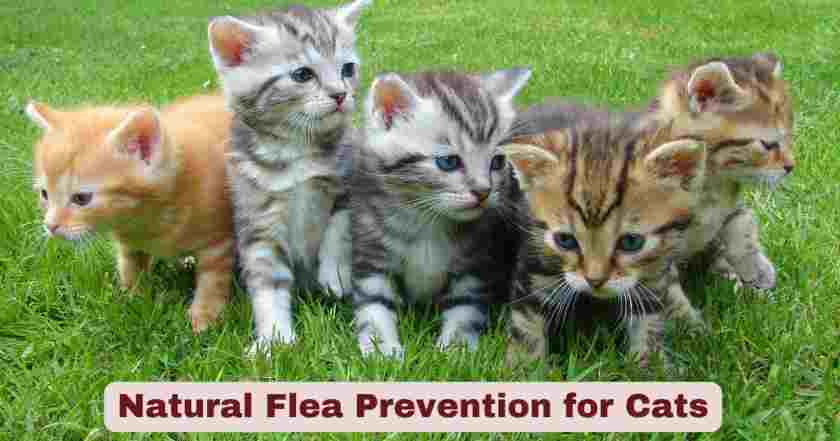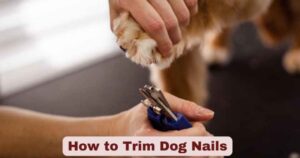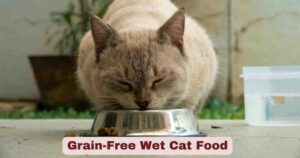As pet owners become increasingly conscious of the products they use on their beloved companions, natural flea prevention for cats methods are experiencing unprecedented popularity. The shift toward chemical-free alternatives isn’t just a trend—it’s a response to growing concerns about the potential side effects of conventional flea treatments and the unique needs of sensitive cats.
Traditional chemical-based flea treatments, while effective, can pose significant risks for certain felines. Cats with sensitive skin, compromised immune systems, or underlying health conditions may experience adverse reactions ranging from skin irritation and excessive drooling to more severe symptoms like seizures or organ damage. Kittens and senior cats are particularly vulnerable to these harsh chemicals, making natural alternatives an attractive and safer option for many households.
The approach to natural flea prevention combines three essential pillars: proactive prevention strategies, comprehensive home care, and carefully selected herbal solutions. Rather than relying solely on one method, the most successful natural flea management programs integrate multiple approaches to create a holistic defense system against these persistent parasites.
A significant development in 2025 has been the documented increase in flea resistance to conventional treatments. Veterinary entomologists have observed that certain flea populations are developing tolerance to commonly used chemical insecticides, leading to treatment failures and prolonged infestations. This resistance has prompted both pet owners and veterinary professionals to explore natural alternatives that work through different mechanisms, making them valuable additions to modern flea management protocols.
1. Understanding Fleas and Their Life Cycle
To effectively prevent flea infestations, it’s crucial to understand how fleas infest cats and homes and reproduce. Fleas are remarkable survivors that have evolved sophisticated strategies for finding hosts and establishing persistent populations in both indoor and outdoor environments.
The flea infestation process typically begins when adult fleas jump onto your cat from contaminated environments. These could include areas where other infested animals have been, such as parks, veterinary clinics, or even your own backyard if wildlife carries fleas onto your property. Contrary to popular belief, indoor cats are not immune to flea infestations—fleas can enter homes on clothing, other pets, or through open doors and windows.
Understanding the flea lifecycle is fundamental to successful prevention. The lifecycle consists of four distinct stages: egg, larva, pupa, and adult. Adult fleas represent only about 5% of the total flea population at any given time, while the remaining 95% consists of eggs, larvae, and pupae developing in the environment.
After feeding on your cat’s blood, female fleas can lay up to 50 eggs per day. These eggs are not sticky and fall off your pet into carpets, bedding, furniture crevices, and other areas where your cat spends time. Within 2-14 days, depending on temperature and humidity conditions, these eggs hatch into tiny larvae that feed on organic debris, including adult flea feces that contain partially digested blood.
The larval stage lasts 5-11 days under optimal conditions, after which larvae spin cocoons and enter the pupal stage. Pupae can remain dormant for weeks or even months, waiting for the right conditions to emerge as adults. This extended pupal stage is why flea problems can seem to resurface suddenly, even after apparent successful treatment.
Prevention is invariably more effective than treatment because it’s much easier to keep fleas away than to eliminate an established population. Once fleas have completed several reproductive cycles in your home, the environmental burden of eggs, larvae, and pupae can sustain ongoing infestations for months.
Flea infestations pose serious health risks beyond mere annoyance. Heavy flea burdens can cause anemia, particularly dangerous for kittens, elderly cats, or cats with compromised health. Fleas also serve as intermediate hosts for tapeworms, which cats can contract by ingesting infected fleas during grooming. Additionally, many cats develop flea allergy dermatitis (FAD), a hypersensitive reaction to flea saliva that causes intense itching, hair loss, and secondary skin infections.
2. Why Go Natural? Benefits Over Chemical Treatments
The movement toward natural flea prevention for cats methods is driven by compelling health and safety considerations that extend beyond the treated pet to encompass the entire household ecosystem. Chemical flea treatments, while effective, carry inherent risks that many pet owners are no longer willing to accept, particularly when safer alternatives are available.
Conventional flea treatments frequently cause adverse reactions in sensitive cats. Common side effects include skin irritation, excessive scratching at the application site, lethargy, loss of appetite, vomiting, and diarrhea. More severe reactions can include tremors, difficulty breathing, and in rare cases, seizures. These reactions are particularly concerning because they can occur immediately after application or develop gradually over several days, making it difficult to identify the cause without veterinary intervention.
Natural flea prevention methods are especially beneficial for vulnerable populations within the feline community. Kittens under 12 weeks of age often cannot safely receive conventional flea treatments, leaving them defenseless during a critical developmental period. Senior cats with compromised liver or kidney function may struggle to metabolize chemical treatments effectively, leading to toxicity. Cats with existing health conditions such as asthma, diabetes, or autoimmune disorders may experience exacerbated symptoms when exposed to harsh chemicals.
The benefits of natural approaches extend beyond the treated animal to create safer environments for multi-pet households and families with children. Chemical residues from conventional flea treatments can persist on pet fur and in the environment for weeks, potentially causing skin irritation or respiratory issues in sensitive family members. Natural methods eliminate these concerns while maintaining effectiveness when properly implemented.
Environmental sustainability represents another compelling advantage of natural flea prevention. Chemical treatments contribute to environmental pollution through manufacturing processes, packaging waste, and disposal of unused products. Many conventional flea treatments also pose risks to beneficial insects, aquatic organisms, and wildlife that may come into contact with treated animals or contaminated runoff water.
A significant development in 2025 has been the increased veterinary endorsement of integrated pest management (IPM) approaches that incorporate natural components. Leading veterinary parasitologists now recommend combining natural prevention methods with targeted conventional treatments only when necessary, rather than relying exclusively on chemical solutions. This shift represents a fundamental change in professional attitudes toward holistic pet care and acknowledges the legitimate role of natural methods in comprehensive flea management programs.
Research published in veterinary journals throughout 2024 and early 2025 has demonstrated that cats managed with integrated natural prevention programs experience lower rates of flea-related health issues and show improved overall skin and coat condition compared to those treated exclusively with chemical methods. These findings have prompted many veterinary practices to develop natural flea prevention protocols for their clients.
3. Top Natural Flea Prevention Methods (2025 Updates)
The landscape of natural flea prevention for cats has evolved significantly, with new research validating traditional methods while introducing innovative applications. The following methods represent the most effective natural approaches currently available, each backed by veterinary research and practical experience.
3.1 Diatomaceous Earth (Food Grade)
Diatomaceous earth has emerged as one of the most effective natural flea control substances available to pet owners. This fine powder consists of fossilized remains of microscopic organisms called diatoms, which have razor-sharp edges at the microscopic level that are completely safe for mammals but deadly to insects.
The mechanism of action is purely physical rather than chemical. When fleas come into contact with diatomaceous earth, the microscopic sharp edges penetrate their exoskeleton and absorb the waxy protective coating that helps them retain moisture. This process leads to dehydration and death within hours, making it an excellent tool for both prevention and treatment of existing flea populations.
Proper application is crucial for both safety and effectiveness. Only food-grade diatomaceous earth should be used around pets, as industrial grades contain crystalline silica that can cause respiratory damage. When applying diatomaceous earth, wear a dust mask to avoid inhaling the fine particles, and ensure adequate ventilation in the treatment area.
For carpet treatment, lightly sprinkle diatomaceous earth over the entire surface, paying particular attention to areas where your cat frequently rests. Use a broom or brush to work the powder deep into carpet fibers where flea eggs and larvae typically develop. Allow the treatment to remain in place for at least 4-6 hours, or overnight for maximum effectiveness, before vacuuming thoroughly.
Bedding areas require special attention since cats spend significant time in these locations. Remove all bedding and wash in hot water before applying diatomaceous earth to the underlying surfaces. Sprinkle a thin layer on pet beds, cushions, and favorite resting spots, working the powder into fabric fibers. Replace treated bedding after the specified contact time.
3.2 Apple Cider Vinegar Spray
Apple cider vinegar serves as an excellent natural flea deterrent, though it’s important to understand that it repels rather than kills fleas. The acidic nature of apple cider vinegar creates an environment that fleas find inhospitable, encouraging them to seek alternative hosts while making your cat a less attractive target.
The most effective application involves creating a 50/50 mixture of raw, unfiltered apple cider vinegar and clean water. This dilution provides sufficient acidity to deter fleas while remaining gentle enough for regular use on your cat’s fur. Some pet owners prefer slightly weaker solutions (1 part vinegar to 2 parts water) for cats with sensitive skin.
Application methods vary depending on your cat’s tolerance for spray bottles and handling. For cooperative cats, spray the mixture lightly onto the fur, avoiding the face and ears, and gently work it through the coat with your hands. Focus on areas where fleas commonly congregate, such as the base of the tail, back of the neck, and behind the ears.
Alternative application methods include dampening a cloth with the vinegar solution and gently wiping your cat’s fur, or adding small amounts to drinking water (no more than 1 teaspoon per day) to create internal conditions that fleas find unappealing. However, water additives should be introduced gradually and discontinued if your cat shows any reluctance to drink.
3.3 Cedarwood and Neem Oil (Diluted)
Essential oils require careful handling when used around cats, but properly diluted cedarwood and neem oil have demonstrated significant flea-repelling properties in veterinary studies. These natural substances work by interfering with flea reproductive cycles and creating scent barriers that discourage flea infestations.
Cedarwood oil contains compounds that disrupt flea development and act as natural insect growth regulators. Research has shown that cedarwood oil can reduce flea egg hatching rates by up to 75% when applied to infested environments. The oil also provides immediate repellent effects that discourage adult fleas from jumping onto treated animals.
Neem oil offers complementary benefits through its anti-inflammatory and antimicrobial properties. Beyond flea prevention, neem oil can help soothe irritated skin and prevent secondary bacterial infections that often accompany flea infestations. The oil’s bitter taste also deters cats from excessive grooming of treated areas.
Proper dilution is absolutely critical when using essential oils around cats. Cats lack certain liver enzymes necessary to metabolize many essential oils, making them more susceptible to toxicity than dogs or humans. Safe dilution ratios typically range from 0.5% to 1% for topical applications, meaning no more than 5-10 drops of essential oil per ounce of carrier oil.
Recommended carrier oils include fractionated coconut oil, jojoba oil, or sweet almond oil, all of which provide excellent skin conditioning benefits while serving as safe delivery vehicles for active compounds. Apply diluted oil mixtures sparingly to your cat’s collar area or between the shoulder blades where they cannot easily lick the treated area.
Critical safety warning: Absolutely avoid essential oils that are toxic to cats, including tea tree oil, eucalyptus, peppermint (in concentrated forms), citrus oils, and phenol-containing oils. Even small amounts of these substances can cause serious health problems in cats, including liver damage, respiratory distress, and neurological symptoms.
3.4 Flea-Repellent Herbal Collars
Herbal flea collars offer a convenient, continuous method for natural flea prevention that requires minimal daily maintenance. Modern herbal collars have evolved significantly from earlier versions, incorporating research on cat-safe essential oils and improved delivery systems that provide consistent protection.
Effective herbal collars typically contain combinations of lavender, citronella, and specially processed peppermint that have been rendered safe for feline use. The 2025 market has seen significant improvements in collar design, with many manufacturers now offering “cat-safe essential oil” labeling that indicates rigorous testing for feline safety.
Quality herbal collars utilize slow-release technology that gradually disperses active compounds over extended periods, maintaining consistent flea-repelling properties without overwhelming your cat’s sensitive respiratory system. The best collars incorporate natural plant waxes and fibers that absorb and slowly release essential oil compounds while remaining flexible and comfortable for daily wear.
Collar replacement schedules are crucial for maintaining effectiveness. Most herbal collars lose their potency after 30 days of use, requiring monthly replacement for optimal protection. Some premium collars may offer extended protection periods of up to 8 weeks, but monthly replacement remains the gold standard for consistent results.
When selecting herbal collars, prioritize products from reputable manufacturers who provide detailed ingredient lists and safety testing information. Avoid collars with vague labeling or those that contain unlisted “proprietary blends” that could hide potentially harmful ingredients.
3.5 Natural Flea Comb Routine
Regular flea combing represents one of the most fundamental and effective natural flea prevention methods available to cat owners. This simple technique provides immediate results while serving as an early detection system for emerging flea problems.
Fine-tooth metal combs with teeth spaced approximately 0.1mm apart are essential for effective flea removal. Plastic combs lack the durability and precision necessary to trap adult fleas effectively. Quality metal combs will last for years with proper care and provide superior flea-catching capabilities compared to cheaper alternatives.
Technique is crucial for successful flea combing. Begin at your cat’s head and work systematically toward the tail, combing small sections of fur at a time. Pay particular attention to areas where fleas commonly congregate: the base of the tail, back of the neck, behind the ears, and under the front legs. Use short, firm strokes that penetrate to the skin level where fleas typically hide.
Prepare a bowl of warm, soapy water before beginning your combing session. When fleas are caught in the comb teeth, immediately dip the comb into the soapy water to drown them. The soap breaks the surface tension, preventing fleas from jumping out of the water and escaping back onto your cat.
Daily combing during flea season provides the most effective results, though 3-4 times weekly may be sufficient for prevention in low-risk environments. Regular combing also strengthens the bond between you and your cat while providing opportunities to check for other skin and coat issues.
4. Natural Home & Environment Flea Control
Environmental management represents the cornerstone of successful natural flea prevention for cats, as the vast majority of flea populations develop away from the host animal. Understanding that 95% of fleas exist as eggs, larvae, and pupae in the home environment rather than on pets fundamentally changes the approach to effective flea control.
4.1 Vacuuming and Cleaning Strategies
Vacuuming frequency and technique significantly impact flea population control. Daily vacuuming of areas where cats spend time removes flea eggs before they can hatch and eliminates larvae that depend on organic debris for survival. The vibration and suction of vacuuming also stimulate flea pupae to emerge prematurely, making them susceptible to removal before they can reproduce.
Strategic vacuuming focuses on high-traffic pet areas, including favorite resting spots, areas under furniture, carpet edges, and cracks between floorboards. These locations typically harbor the highest concentrations of developing fleas and provide the greatest return on cleaning efforts.
Pay special attention to upholstered furniture where cats rest, as fabric fibers provide ideal hiding places for flea eggs. Use vacuum attachments to clean crevices, seams, and areas where cushions meet chair frames. Don’t forget to vacuum pet bedding, cat trees, and scratching posts, as these items accumulate significant numbers of flea eggs through regular use.
Immediate disposal of vacuum contents is essential to prevent re-infestation. Flea eggs and larvae collected in vacuum bags or canisters can continue developing and eventually emerge as adults if left undisturbed. Either dispose of vacuum bags immediately after cleaning or place a small piece of flea collar or diatomaceous earth in bagless vacuum canisters to kill collected fleas.
4.2 Washing Pet Bedding Weekly
Hot water washing represents one of the most effective methods for eliminating all flea life stages from fabric items. Water temperatures above 140°F (60°C) kill eggs, larvae, pupae, and adults on contact, making weekly hot water washing an essential component of natural flea management programs.
All washable fabric items that cats contact should be included in weekly washing routines: bedding, blankets, cushion covers, and even your own bedding if cats sleep on human beds. Adding a cup of white vinegar to the wash cycle enhances flea-killing properties while serving as a natural fabric softener.
For items that cannot withstand hot water washing, high-heat dryer cycles provide alternative flea elimination. Twenty minutes in a hot dryer will kill all flea life stages, making this an excellent option for delicate fabrics or items with special care requirements.
4.3 Flea-Repelling Indoor Plants
Natural plant-based deterrents provide continuous flea control while enhancing home air quality and aesthetics. Rosemary, lemongrass, and basil contain natural compounds that repel fleas while remaining safe for cats when properly positioned. These plants should be placed in areas accessible to beneficial airflow but out of reach of cats who might chew on them.
Rosemary plants release natural volatile oils that create invisible barriers against fleas while providing fresh herbs for cooking. Position rosemary plants near entryways, in sunny windows, or on elevated surfaces where aromatic compounds can circulate throughout living spaces.
Lemongrass offers potent citrus scents that fleas find particularly offensive. This tropical grass thrives in bright, warm locations and releases stronger deterrent compounds when leaves are gently brushed or disturbed by air movement.
Basil varieties, particularly African Blue and Sacred Basil, produce compounds that interfere with flea sensory systems while providing culinary benefits for human family members. These plants prefer warm, humid conditions and benefit from regular harvesting that encourages continued growth and oil production.
4.4 Cedar Chips in Strategic Locations
Cedar chips provide long-lasting natural flea deterrent properties when placed in strategic locations throughout the home. The natural oils in cedar wood interfere with flea reproductive cycles while creating aromatic barriers that discourage adult fleas from establishing populations.
Place small sachets of cedar chips under furniture, in closets where pet supplies are stored, and around the perimeter of rooms where cats spend significant time. Refresh cedar chips monthly or when their aromatic properties begin to fade.
Avoid placing cedar chips directly in areas where cats rest, as some felines may be sensitive to direct contact with cedar oils. Instead, use cedar chip barriers to create protective zones around favored resting areas.
4.5 Baking Soda and Salt Carpet Treatment
The baking soda and salt carpet treatment offers an effective natural method for eliminating flea eggs and larvae embedded in carpeting. Mix equal parts baking soda and fine salt, sprinkle generously over carpeted areas, and work the mixture deep into carpet fibers using a broom or brush. Allow the treatment to remain overnight, then vacuum thoroughly in the morning.
This treatment works through dehydration and abrasion, similar to diatomaceous earth but using common household ingredients. The fine particles penetrate carpet fibers where flea eggs typically accumulate, disrupting their development and creating hostile conditions for larvae.
Repeat this treatment weekly during active flea seasons or monthly as a preventive measure. The treatment is completely safe for pets and humans, though some cats may temporarily avoid treated areas due to texture changes in carpeting.
5. Flea Prevention Through Diet
5.1 Immune System Support
Nutritional approaches to flea prevention focus on strengthening your cat’s natural defenses and creating internal conditions that make them less attractive to fleas. A robust immune system and healthy skin barrier provide the first line of defense against external parasites.
High-quality protein sources support skin and coat health while providing essential amino acids necessary for immune function. Look for cat foods with named meat sources as the first ingredient and avoid products with excessive grain fillers that may contribute to skin sensitivities.
Antioxidant-rich foods help combat inflammation and support overall health. Dark leafy greens, blueberries, and other antioxidant sources can be introduced in small amounts as treats or supplements, though cats’ obligate carnivore status limits the variety of plant foods they can safely consume.
5.2 Beneficial Supplements
Brewer’s yeast has gained popularity as a natural flea deterrent, though scientific evidence remains mixed regarding its effectiveness. When used, brewer’s yeast should be introduced gradually in small amounts (no more than 1/4 teaspoon daily for average-sized cats) to avoid digestive upset.
The theoretical mechanism involves B-vitamin content that may alter skin scent in ways that repel fleas. While research remains inconclusive, many pet owners report positive results when brewer’s yeast is combined with other natural prevention methods.
Omega-3 fatty acids from fish oil provide well-documented benefits for skin and coat health that may enhance natural flea resistance. These essential fatty acids support skin barrier function, reduce inflammation, and promote healthy fur that may be less hospitable to flea infestations.
Choose high-quality fish oil supplements specifically formulated for cats, and introduce gradually to avoid digestive upset. Typical dosing ranges from 250-500mg combined EPA/DHA daily for average-sized adult cats, though veterinary consultation is recommended for specific dosing guidance.
5.3 Foods to Avoid
Garlic represents a persistent myth in natural flea prevention that requires clear debunking. Despite widespread claims about garlic’s flea-repelling properties, this bulb vegetable is toxic to cats and can cause serious health problems including hemolytic anemia.
Similarly, onions and related allium family plants should never be used for flea prevention purposes. These foods contain compounds that damage red blood cells and can lead to life-threatening anemia, particularly with repeated exposure.
The 2025 trend toward holistic diets emphasizes building flea-resistant skin and fur through comprehensive nutritional support rather than relying on specific “magical” ingredients. Focus on overall diet quality, appropriate supplementation, and consistent nutritional support rather than searching for single-ingredient solutions.
6. DIY Natural Flea Spray Recipes (Vet-Reviewed)
Creating effective natural flea sprays at home offers pet owners complete control over ingredients while ensuring cost-effective flea prevention. These vet-reviewed recipes have been tested for both safety and efficacy in real-world applications throughout 2025.
Recipe 1: Apple Cider Vinegar Lemon Deterrent Spray
This gentle yet effective spray combines the flea-repelling properties of apple cider vinegar with the natural citrus oils found in lemon peels. The combination creates a hostile environment for fleas while remaining safe for regular use on cats.
Ingredients:
- 1 cup raw, unfiltered apple cider vinegar
- 1 cup clean water
- Peel from 1 organic lemon (no white pith)
Preparation: Steep lemon peel in boiling water for 15 minutes, then strain and cool completely. Mix equal parts of the cooled lemon water with apple cider vinegar. Store in a spray bottle in the refrigerator for up to one week.
Application: Spray lightly on your cat’s fur, avoiding face and ears. Use 2-3 times weekly as a preventive measure, or daily during flea season. Always test on a small area first to ensure your cat doesn’t have sensitive reactions.
Recipe 2: Diluted Neem Oil and Witch Hazel Spray
This anti-inflammatory spray provides both flea prevention and skin soothing properties, making it ideal for cats with sensitive skin or existing flea bite irritation.
Ingredients:
- 1/4 teaspoon pure neem oil
- 2 tablespoons witch hazel
- 1 cup distilled water
- 1 teaspoon liquid castile soap (as emulsifier)
Preparation: Mix neem oil with liquid soap until well combined, then slowly add witch hazel while stirring. Add distilled water and shake thoroughly before each use. Store in a dark spray bottle for up to two weeks.
Application frequency and safety notes: Use every other day during active prevention periods, reducing to twice weekly for maintenance. Avoid eyes, nose, and mouth areas. Discontinue use if any irritation develops.
Critical safety reminder: Never use essential oils that are toxic to cats, including tea tree, eucalyptus, peppermint, citrus oils, or any phenol-containing substances. When in doubt, consult your veterinarian before using any homemade spray recipe.
7. When to See a Vet: Signs Natural Remedies Aren’t Enough
While natural flea prevention methods are highly effective when properly implemented, certain situations require immediate veterinary intervention. Recognizing these warning signs ensures your cat receives appropriate care before minor issues develop into serious health problems.
Flea Allergy Dermatitis (FAD)
Flea allergy dermatitis represents the most common flea-related health issue requiring veterinary treatment. Cats with FAD develop hypersensitive reactions to flea saliva, causing intense itching that persists even after fleas are eliminated.
Signs of FAD include excessive scratching, particularly at the base of the tail and back of the neck, development of small red bumps or scabs on the skin, hair loss from constant scratching and licking, and thickened, darkened skin in affected areas.
Cats with FAD often continue showing symptoms weeks after successful flea elimination because their immune systems remain hypersensitive to residual flea proteins in the environment. Veterinary treatment typically involves anti-inflammatory medications and intensive flea control measures.
Excessive Scratching and Bald Patches
When natural flea prevention fails to control scratching behaviors, professional evaluation becomes necessary to prevent secondary complications. Constant scratching creates open wounds that serve as entry points for bacterial infections, potentially leading to serious skin conditions.
Warning signs include visible bald patches from over-grooming, open sores or wounds from scratching, signs of bacterial infection such as pus or foul odors, and behavioral changes such as lethargy or loss of appetite.
Signs of Anemia or Tapeworms
Heavy flea infestations can cause life-threatening anemia, particularly in kittens, elderly cats, or those with compromised health. Signs of flea-induced anemia include pale gums (should be pink, not white or gray), lethargy and weakness, rapid breathing or heart rate, and cold extremities.
Tapeworm infections require prescription medications that are not available through natural methods. Signs include rice-like segments visible around the anus or in feces, scooting behavior or excessive licking of the anal area, and visible worm segments in vomit.
When Natural Methods Should Be Used Preventively
The most important principle is using natural methods preventively rather than during heavy infestations. Natural approaches work best when implemented before flea populations become established, making them excellent tools for ongoing prevention but less effective for treating severe existing problems.
If you discover more than a few fleas during regular combing, or if your cat shows signs of significant discomfort, combining natural methods with veterinary-prescribed treatments often provides the fastest relief while maintaining long-term natural prevention goals.
8. Natural Flea Prevention: 2025 Data and Trends
The pet care industry has witnessed remarkable shifts toward natural flea prevention methods, driven by consumer demand for safer alternatives and growing veterinary acceptance of integrated pest management approaches.
Market growth data reveals unprecedented expansion in natural flea and tick products, with the 2025 pet care market showing 32% growth in this category compared to the previous year. This growth significantly outpaces the 8% overall growth rate for conventional flea treatments, indicating a fundamental shift in consumer preferences.
Consumer adoption surveys indicate that 63% of cat owners now use at least one natural flea prevention method as part of their regular pet care routine. This represents a dramatic increase from just 34% in 2022, demonstrating rapid acceptance of natural alternatives among mainstream pet owners.
Veterinary reporting shows encouraging trends in flea population resistance patterns. Practices utilizing integrated natural care programs report lower resistance rates in local flea populations, suggesting that natural methods may help preserve the effectiveness of conventional treatments when they are needed.
The most effective method combinations according to 2025 veterinary surveys include diatomaceous earth application combined with regular flea combing and herbal collar use. This three-pronged approach provides comprehensive coverage addressing both environmental flea populations and on-animal prevention.
Regional variations in natural method adoption show higher uptake in areas with established holistic veterinary practices and among households with multiple pets or young children. Urban areas demonstrate particularly strong growth in natural product adoption, likely reflecting greater awareness of environmental and health concerns.
9. Recommended Natural Products for Flea Prevention (Updated 2025 List)
The 2025 market offers numerous high-quality natural flea prevention products that have earned veterinary endorsement and demonstrated consistent effectiveness in real-world applications.
Wondercide Natural Flea & Tick Spray (Cedarwood-based) has gained recognition for its comprehensive formula combining cedarwood oil with other cat-safe essential oils. The 2025 formulation includes improved delivery systems that provide longer-lasting protection while maintaining safety for sensitive cats.
Vet’s Best Flea & Tick Home Spray offers environmental treatment capabilities with plant-based active ingredients that eliminate fleas in carpeting, upholstery, and other fabric surfaces. The formula is safe for use around cats and provides residual protection for up to 30 days.
Only Natural Pet Herbal Collar features slow-release technology that gradually disperses cat-safe essential oils over 8-week periods. The 2025 version includes improved collar materials that resist water and maintain flexibility throughout the wear period.
Earth Animal Nature’s Protection Daily Internal Powder provides immune system support through carefully balanced herbal ingredients that may enhance natural flea resistance. The powder formula easily mixes with wet food and provides additional nutritional benefits.
Critical selection criteria for any natural flea product include clear “cat-safe” labeling on all packaging, detailed ingredient lists without vague “proprietary blends,” veterinary endorsement or approval statements, and third-party safety testing certifications.
Always verify product safety with your veterinarian before introducing new natural flea prevention products, particularly if your cat has existing health conditions or takes medications that might interact with herbal ingredients.
10. FAQ Section
a) Are essential oils safe for cats?
Most essential oils are NOT safe for cats due to their unique liver metabolism. Cats lack specific enzymes needed to process many essential oil compounds, making them susceptible to toxicity even from small amounts. Safe oils include properly diluted cedarwood and neem oil, but tea tree, eucalyptus, peppermint, and citrus oils should always be avoided. When in doubt, consult your veterinarian before using any essential oil product around cats.
b) Can indoor cats get fleas?
Yes, indoor cats can definitely get fleas. Fleas can enter homes on clothing, other pets, through open doors and windows, or on items brought in from outside. They can also jump onto cats during brief outdoor excursions like veterinary visits. Indoor cats may actually be more susceptible to flea problems because they lack natural immunity that outdoor cats develop through regular exposure.
c) Is garlic a natural flea remedy?
No, garlic is NOT safe for cats and should never be used as a flea remedy. Despite persistent myths about garlic’s flea-repelling properties, this food is toxic to cats and can cause hemolytic anemia, which destroys red blood cells. Even small amounts can be dangerous, and there are no safe dosages of garlic for cats. Stick to proven safe alternatives like apple cider vinegar or diatomaceous earth.
d) Can I use dog flea products on cats?
Never use dog flea products on cats unless specifically labeled as safe for both species. Dogs and cats metabolize chemicals differently, and many dog flea treatments contain ingredients that are toxic to cats. Permethrin-based products, commonly used for dogs, can cause severe neurological reactions and even death in cats. Always choose products specifically formulated and tested for feline use.
Conclusion
Natural flea prevention for cats represents a safer, eco-friendly, and effective approach to parasite control when used consistently and correctly. The combination of environmental management, dietary support, and carefully selected topical treatments creates a comprehensive defense system that protects cats without exposing them to potentially harmful chemicals.
The best results consistently come from combining multiple methods rather than relying on any single approach. Successful natural flea prevention programs typically integrate regular hygiene practices like vacuuming and washing, dietary support through high-quality nutrition and appropriate supplements, and topical solutions such as diatomaceous earth application and herbal deterrents.
The 2025 trends toward integrated pest management acknowledge that natural methods work best as preventive measures rather than treatment for established infestations. When implemented proactively, natural approaches can effectively prevent flea problems while supporting overall cat health and household safety.
Remember that every cat is unique, and what works best for one may require adjustment for another. Always consult your veterinarian when developing a long-term flea management plan, particularly if your cat has existing health conditions or has experienced flea-related problems in the past. With patience, consistency, and the right combination of natural methods, you can keep your feline companion comfortable and flea-free while maintaining the safest possible environment for your entire household.







